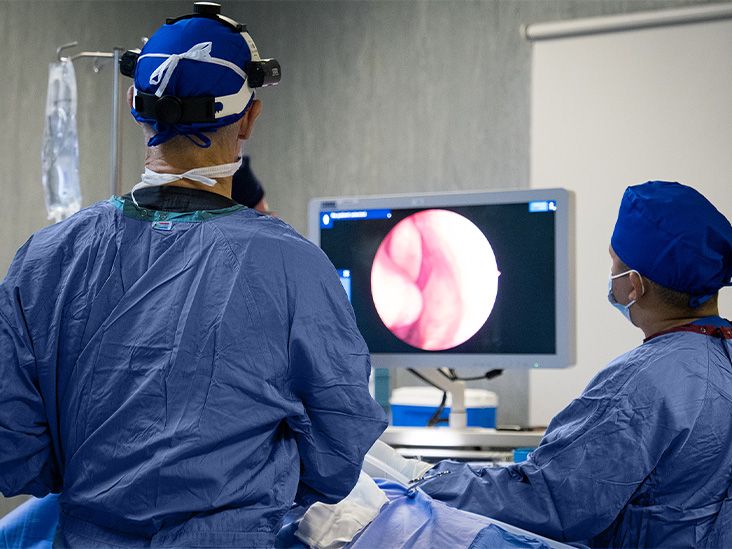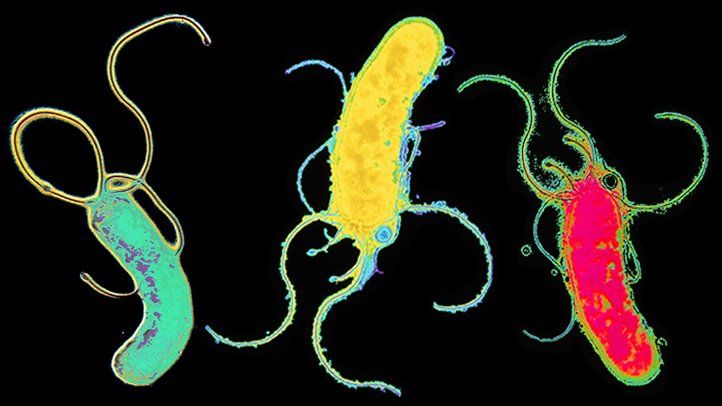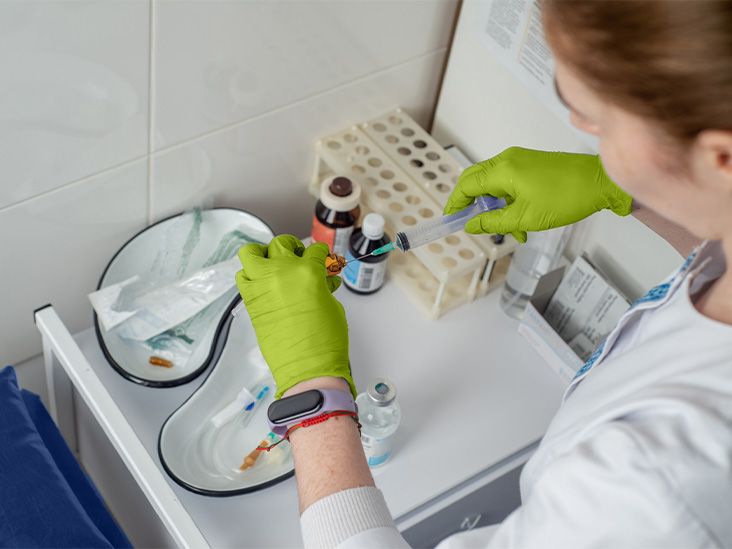If you're here because you're worried about stomach cancer symptoms, take a slow breath with me. You're doing the right thinggetting informed. Let's walk through the signs that matter most, what's common (and what's not), and when to call a doctorfast. No scare tactics, just clear, friendly guidance.
Here's the balance we'll keep together: most stomach symptoms have many noncancer causes. Still, persistent or changing symptoms deserve attention. This guide will help you spot red flags without spiraling into worry. We'll focus on adenocarcinoma stomach cancer (the most common type), but also touch on other forms of gastric cancer and what to expect if tests are needed.
Quick answer
Let's start with the plain-language, "tell me now" version. Stomach cancer symptoms can be subtle at firstthink nagging indigestion that doesn't quite behave, or feeling full sooner than you used to. Over time, symptoms may include weight loss without trying, upper belly discomfort, fatigue from anemia, or black, tarry stools. If a tumor sits near the gastroesophageal (GE) junction (where your esophagus meets your stomach), swallowing may feel harder.
Core symptoms you may notice day to day
These are the signs people often describe when gastric cancer is in the picture. Remember: any one of these can be caused by something benign. What matters is persistence, pattern, and change over time.
- Feeling full quickly (early satiety) or bloating after small meals
- Indigestion or heartburn that doesn't improve with usual remedies
- Unexplained weight loss and a fading appetite
- Nausea or vomiting (sometimes with blood, but not always)
- Upper belly (epigastric) pain or a gnawing discomfort
- Fatigue or weakness from anemia; black, tarry stools (called melena)
- Trouble swallowingespecially if the tumor is near the GE junction
Early vs. late symptoms at a glance
- Early-stage gastric cancer is often silent. When symptoms do show up, they're mild: vague dyspepsia (indigestion), early satiety, or a dull, hard-to-place discomfort. According to the American Cancer Society and Mayo Clinic, this early quietness is one reason stomach cancer can be hard to catch promptly.
- Advanced signs can include persistent vomiting, bleeding, jaundice (yellowing of the skin/eyes), abdominal swelling from fluid (ascites), or severe, unrelenting pain.
Balance statement: Most stomach cancer symptoms overlap with everyday issues like reflux or gastritis. The benefit of recognizing stomach cancer symptoms early is timely evaluation; the risk is unnecessary worry. This guide aims to help you do the first while avoiding the second.
See a doctor
When should you act quickly? Here's your clear, no-guessing-needed checklist.
Seek urgent care immediately if you have
- Vomiting blood or passing black, tarry stools
- Severe abdominal pain or repeated vomiting (possible obstruction)
- Rapid, unexplained weight loss paired with profound fatigue
Book a prompt appointment if you notice
- Indigestion, early satiety, or heartburn lasting more than 23 weeks despite over-the-counter treatment
- New, persistent upper belly pain, poor appetite, or unexplained anemia
- Symptoms that are changing or getting worse, even if they seem subtle
How doctors check symptoms
- Initial workup: a careful history and exam, blood tests like a complete blood count (CBC) to look for anemia, and a stool test for hidden (occult) blood.
- The key test: an upper endoscopy (a thin camera scope) with biopsies is the gold standard to diagnose gastric cancer. Imaging such as CT scans, endoscopic ultrasound, or PET scans may follow to stage disease and plan treatment.
If any of this sounds intimidating, that's normal. The goal of testing is clarityeither peace of mind or a focused plan forward.
Why symptoms happen
Understanding the "why" can be strangely comforting. When you know the mechanism, symptoms feel less mysterious.
How gastric adenocarcinoma creates symptoms
- Tumor irritation or ulceration can cause pain and bleeding, leading to anemia and those telltale black stools.
- Blockage at the stomach outlet or GE junction can cause early satiety, vomiting after meals, or trouble swallowing.
- Spread to nearby organs or surfaces can trigger jaundice (liver involvement), fluid in the belly (ascites), or palpable lymph nodes (sometimes in the left collarbone area).
Not always cancer: common noncancer causes
- GERD (reflux), peptic ulcer disease, H. pylori infection, gastritis, or even a stubborn viral gastroenteritis can mimic many stomach cancer symptoms.
- Why persistence matters: If symptoms linger beyond a few weeks, or evolve rather than settle down, it's your cue to check in. Many conditions improve with basic care; stomach cancer typically does not.
If your clinician mentions "alarm features" (weight loss, anemia, bleeding, trouble swallowing), it usually means moving more quickly to an endoscopy. That guidance is in step with major clinical resources, including the American Cancer Society and Mayo Clinic.
Risk and prevention
Risk is not destiny. But knowing your risk can help you prioritize the right tests and lifestyle changes.
Established risk factors
- Helicobacter pylori (H. pylori) infection and chronic gastritis
- Smoking
- Diet high in salty or smoked foods and low in fruits and vegetables
- Family history and certain genetic syndromes (for example, CDH1 mutation, Lynch syndrome)
- Prior stomach polyps, age over 65, and male sex
Practical steps you can take
- Test-and-treat for H. pylori if you're at risk or have recurrent dyspepsia. It's a simple step that can reduce the risk of gastric cancer over time.
- Quit smoking. Your stomachand the rest of your bodywill thank you.
- Shift your plate: more produce, fewer salty/smoked foods. Think color and fiber.
- Discuss screening if you have a strong family history or a known genetic risk. In some cases, high-risk individuals undergo periodic endoscopy.
If you like details, the risk factors and prevention notes line up with clinical overviews from trusted sources such as the American Cancer Society and Mayo Clinic.
Types explained
"Stomach cancer" isn't just one disease, though most cases are adenocarcinoma. Here's how that matters for symptoms.
Most stomach cancers are adenocarcinoma
Adenocarcinomas arise from mucus-producing cells lining the stomach. Symptoms often include indigestion, early satiety, and anemia if bleeding occurs. Tumors near the GE junction can cause heartburn-like symptoms and trouble swallowing, which can be mistaken for reflux for a while.
Other types and symptom nuances
- GIST (gastrointestinal stromal tumor): may cause bleeding or a feeling of fullness; sometimes found incidentally.
- Lymphoma of the stomach: can present with pain, weight loss, or early satiety, and may respond to different treatments than adenocarcinoma.
- Neuroendocrine tumors: often slow-growing; symptoms vary from vague fullness to bleeding, occasionally with hormone-related signs.
If your doctor mentions these, it's because treatment paths and prognoses differ, and tailoring care starts with the correct type.
After diagnosis
If a biopsy confirms gastric cancer, you'll likely feel a rush of emotions and questions. That's normal. Here's what usually happens nextand how it can help you feel back in control.
First steps after a positive biopsy
- Staging: CT scans, endoscopic ultrasound, and sometimes a minimally invasive laparoscopy help determine how advanced the cancer is and the best way to treat it.
- Multidisciplinary care: You'll meet a teamgastroenterology, surgical oncology, medical oncology, and sometimes radiation oncologywho will collaborate on your plan.
Main treatments and how they address symptoms
- Surgery (subtotal or total gastrectomy): Often used for localized disease to remove the tumor and relieve obstruction or bleeding.
- Chemotherapy and chemoradiation: Can shrink tumors before surgery, treat microscopic disease after surgery, or manage advanced disease.
- Targeted therapy (for example, HER2-directed drugs) and immunotherapy: Options for certain tumor profiles; your pathology report guides these decisions.
Supportive care that makes a difference
- Managing reflux, nausea, and pain with the right medications and timing.
- Nutrition support, including high-calorie, high-protein strategies; after gastrectomy, working with a dietitian is invaluable to navigate smaller meals, vitamin supplementation (like B12), and maintaining weight.
- Treating anemia, often with iron therapy or transfusions if needed.
- Palliative careavailable at any stagefocuses on comfort, symptom control, and quality of life. It's not the same as hospice; think of it as an extra layer of support.
Big picture: The aim is to treat the cancer and the person. Both matter equally.
Real stories
Sometimes the most helpful insights come from lived experiences. These short, anonymized vignettes reflect what survivors often report at centers like MD Anderson and City of Hope.
- The lingering "heartburn": "I kept antacids in my pocket. At first they worked, then not really. I noticed I was full after half a sandwich. That's when I called my doctor."
- The gnawing not-quite-hunger: "It felt like an empty ache that wasn't fixed by eating. When I started avoiding meals because I felt lousy afterward, I knew something had changed."
- The fatigue that didn't add up: "I could barely climb stairs. Turned out my blood count was low. Treating the anemia helped, and it led to the endoscopy I needed."
- The surprising chest/upper belly twinges: "Some days it felt like reflux, some days like pressure under my ribs. The pattern over weeks was the clue."
Takeaway: Listen to your bodyand especially to changes that persist. You know your normal. If symptoms pull you away from that baseline for more than a couple of weeks, that's worth attention.
Tools you can use
Here's how to turn worry into a clear plan.
Simple symptom tracker
For two to three weeks, jot down:
- Pain or discomfort: when, where, and intensity
- Appetite and early satiety: how quickly you feel full
- Weight: once or twice weekly
- Reflux or heartburn episodes and what you tried
- Stools: color/consistency; note any black, tarry stools
- Energy levels and fatigue
Appointment-ready checklist
- How long symptoms have been present and whether they're changing
- Triggers (meals, certain foods, stress) and what helps
- Any weight changes and appetite shifts
- Medications tried (OTC and prescription)
- Family history of gastric cancer or related syndromes
Smart questions to ask
- Do I need an endoscopy based on my symptoms and risk factors?
- Could this be H. pylori? Should I be tested and treated?
- If symptoms persist after initial treatment, what's our next step?
- When should I call you urgently?
A quick detour
Let's talk about context. In many countries, routine stomach cancer screening isn't recommended for everyone because overall risk is relatively low. But for people with high riskdue to genetics, strong family history, or certain geographic/ethnic backgroundsearlier or periodic endoscopy can make sense. If you're unsure where you fit, ask. That one conversation can save months of second-guessing.
Helpful nuance
How do stomach cancer symptoms differ from common reflux or ulcers? Three big clues:
- Time course: reflux and simple gastritis often fluctuate; cancer symptoms tend to gradually progress.
- Alarm features: bleeding (vomit that looks like coffee grounds or black stools), weight loss, iron-deficiency anemia, trouble swallowing.
- Response to therapy: typical reflux usually improves with acid suppression and lifestyle changes. If it doesn'teven after a solid trialit's a sign to reassess.
Your next step
If your symptoms are new and mild, try a two- to three-week window of careful tracking and sensible steps: gentle diet tweaks, avoiding late-night meals, minimizing alcohol and smoking, and using over-the-counter remedies as advised. If things improve and stay improved, wonderful. If they persist or worsenespecially if you notice early satiety, unexplained weight loss, fatigue, or black stoolsbook that appointment. And if you're vomiting blood, can't keep fluids down, or have severe pain, please seek urgent care now.
Before we close, a personal note. I've sat with people in that "in between" placebetween worry and answers. What helped most was having a plan and a timeline. Give yourself both. You deserve clarity, and you're allowed to ask for it.
Conclusion
Stomach cancer symptoms can look a lot like everyday indigestion, which is why persistence and change over time are the key clues. If you're noticing early satiety, ongoing heartburn, unexplained weight loss, fatigue, or black stoolsespecially for more than two to three weeksbook an appointment. And if you're vomiting blood, have severe abdominal pain, or can't keep fluids down, seek urgent care. Many noncancer conditions cause similar symptoms, and that's exactly why getting checked is worth it. Early evaluation, when needed, leads to better outcomes and clearer answers. What questions are still on your mind? If you want, share what you're noticingsometimes the simple act of describing symptoms brings relief and the next right step into focus.
FAQs
What are the most common early stomach cancer symptoms?
Early stomach cancer often causes vague indigestion, feeling full quickly (early satiety), persistent heartburn, and mild upper‑abdominal discomfort.
When should I consider my stomach symptoms an emergency?
Seek urgent care if you vomit blood, notice black/tarry stools, have severe abdominal pain, or experience rapid, unexplained weight loss with extreme fatigue.
How is stomach cancer diagnosed?
Doctors usually start with blood tests and a stool occult‑blood test, then perform an upper endoscopy with biopsies. Imaging (CT, endoscopic ultrasound, PET) follows to stage the disease.
Can non‑cancerous conditions cause the same symptoms?
Yes—GERD, peptic ulcers, H. pylori infection, gastritis, and viral gastroenteritis can mimic many stomach cancer symptoms. Persistence or worsening of symptoms is the key reason to get evaluated.
What lifestyle changes can lower my risk of stomach cancer?
Quitting smoking, reducing salty or smoked foods, eating plenty of fruits and vegetables, and testing/treating H. pylori infection are proven ways to decrease risk.
Disclaimer: This article is for informational purposes only and does not constitute medical advice. Always consult with a healthcare professional before starting any new treatment regimen.
Related Coverage
Get insight into what doctors see during a stomach cancer endoscopy, why the images matter, and how detection can save lives....
Get insights on how immunotherapy for stomach cancer works, who benefits most, side effects, and key questions for your oncologist....
Is there a real connection between kimchi stomach cancer risk? Get the facts on fermented food safety and what you can do to stay healthy....
Identify stomach cancer symptoms, know when they become urgent, and learn the steps doctors use for diagnosis and treatment....
A stomach cancer diagnosis includes upper endoscopy with biopsy, staging scans, and treatment planning to guide you forward....
Stomach cancer chemotherapy uses drug combos before or after surgery and as treatment for advanced disease, with side‑effect tips....
Stomach cancer quizzes boost public knowledge on risk factors, symptoms, prevention and facts. Interactive quizzes empower early detection and care seeking....
Get essential info on esophageal and stomach cancer symptoms, risk factors, diagnosis, and treatment options to help you stay informed and prepared....
Subcutaneous immunotherapy for GI cancer offers a convenient alternative to IV treatment. Find out how it works and who it’s for....
Compare stomach cancer vs ulcer symptoms, causes, tests and treatments, and spot red‑flag signs that require urgent attention....









